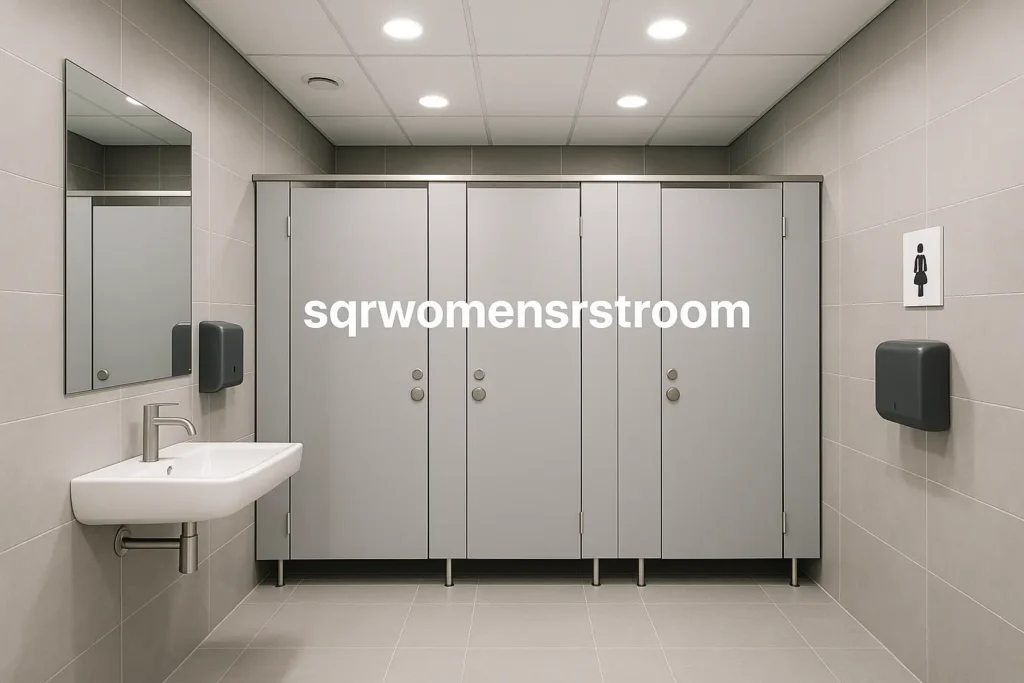The sqrwomensrestroom is a modern response to long-standing issues in public restroom design for women. It represents a shift away from outdated, uncomfortable, and often unsafe restroom environments to spaces that prioritize privacy, hygiene, technology, and inclusivity. The term refers to a new design standard that focuses on real-life needs instead of generic infrastructure planning. This approach challenges traditional layouts and introduces a smarter, safer, and more inclusive system built around the user experience.
While not yet a universal fixture, the sqrwomensrestroom has emerged as a conceptual model that blends architectural foresight with modern-day expectations. It reimagines public restrooms not just as necessary utilities, but as spaces that impact the dignity, confidence, and safety of every user.
Why Modern Public Spaces Need Redesign
Traditional public restrooms, especially for women, have failed to evolve with growing societal needs. Long queues, cramped stalls, lack of privacy, limited facilities for nursing mothers, and poor sanitation have been common complaints. These problems not only frustrate users but also deter them from fully engaging in public spaces such as parks, transit hubs, shopping centers, or entertainment venues.
The sqrwomensrestroom addresses these pain points directly. Instead of treating restroom design as an afterthought, it positions it at the center of urban inclusivity. By doing so, it supports a more equitable use of public infrastructure and encourages a sense of dignity for women in shared environments.
Key Features That Define the sqrwomensrestroom Model
At the heart of the sqrwomensrestroom concept are thoughtful features designed for maximum privacy, hygiene, and usability. The layout typically includes full-height partitions that eliminate awkward gaps, spacious stalls, and sound-dampening materials for increased comfort. High-quality fixtures and durable, antimicrobial surfaces also contribute to a cleaner and healthier experience.
Each element within the sqrwomensrestroom is planned with real-life usage in mind. From hand dryers that actually dry hands properly, to mirrors with natural lighting and ample space for bags or strollers, nothing is left to chance. It’s an approach that values design not just for aesthetics, but for functionality and respect.
How sqrwomensrestroom Supports Accessibility and Inclusivity
A significant aspect of the sqrwomensrestroom is its commitment to accessibility. It goes beyond legal compliance and actively ensures that people of all abilities can use the facility comfortably. Wider doors, barrier-free stalls, support rails, and accessible sinks are seamlessly integrated.
This inclusive model also provides dedicated spaces for caregivers, nursing mothers, and those with sensory sensitivities. The sqrwomensrestroom isn’t only for a specific demographic—it is for every woman and girl who requires a safe, respectful space, regardless of physical ability or personal circumstance.
Safety Enhancements That Empower Women
Safety is a non-negotiable part of the sqrwomensrestroom design. Emergency buttons inside stalls, well-lit entry points, visible exit routes, and optional discreet surveillance in public zones ensure that women feel secure. Unlike traditional restrooms that often leave users feeling exposed or anxious, these facilities are built with empowerment in mind.
The physical layout discourages loitering or misuse, and security features are blended into the design to avoid appearing intrusive. The sqrwomensrestroom fosters peace of mind, allowing users to focus on their needs without second-guessing their surroundings.
Technology Integration in sqrwomensrestroom Design
Smart restroom technology is a defining element of the sqrwomensrestroom. Touchless faucets, flush systems, and soap dispensers reduce contamination while enhancing user convenience. Sensors monitor supply levels and occupancy to improve maintenance and ensure cleanliness throughout the day.
In some designs, mobile apps or QR systems allow users to locate the nearest sqrwomensrestroom or check availability in high-traffic areas. These technological additions are not just futuristic gimmicks—they are practical tools that improve everyday usability and resource management.
Environmental and Hygiene Benefits
Public health and environmental sustainability are essential to modern infrastructure. The sqrwomensrestroom uses water-saving fixtures, energy-efficient lighting, and eco-friendly materials to reduce its environmental impact. Ventilation systems are optimized to maintain airflow without wasting energy, and cleaning protocols are designed around smart tracking systems to ensure consistent sanitation.
These restrooms also include surfaces that resist bacteria, odor, and grime, which reduces maintenance costs and keeps the facility pleasant for all users. By focusing on hygiene and sustainability, the sqrwomensrestroom delivers benefits far beyond the restroom walls.
Public Feedback and Real-Life Use Cases
Where implemented, the sqrwomensrestroom has received overwhelmingly positive feedback. Users report greater comfort, security, and satisfaction compared to traditional public restrooms. Venues adopting these features, such as new transport terminals or modern shopping centers, have seen improved user experience ratings and fewer complaints.
Parents, travelers, caregivers, and people with mobility issues have praised the attention to detail and ease of access. While still an emerging concept, the sqrwomensrestroom is already influencing design standards for upcoming public projects worldwide.
How sqrwomensrestroom Reflects the Future of Urban Planning
The evolution of public spaces must be grounded in respect and usability. The sqrwomensrestroom serves as a blueprint for that evolution. Its design combines forward-thinking engineering with a clear understanding of daily human behavior. As cities grow and demographics shift, the need for inclusive, efficient, and safe restrooms becomes increasingly clear.
Urban planners, architects, and policymakers are beginning to view these upgraded restrooms not as luxuries, but as necessities. The sqrwomensrestroom concept shows how infrastructure can respect identity, prioritize health, and support equality without compromise.
Conclusion
The sqrwomensrestroom is more than just a redesign—it is a redefinition of how we think about shared spaces. It responds directly to longstanding frustrations, introducing improvements that feel obvious in hindsight yet revolutionary in execution. As the demand for dignity, accessibility, and hygiene grows, public spaces must rise to meet it.
Whether in transportation hubs, shopping centers, or parks, the sqrwomensrestroom offers a new path forward. It’s not a trend—it’s a standard that needs to be embraced universally for real change to take place. Investing in smarter, safer public restrooms is not just good design—it’s a public necessity.
FAQs
1. What is the sqrwomensrestroom concept?
It’s a modern restroom design standard focused on privacy, safety, hygiene, and accessibility for women in public spaces.
2. Where are sqrwomensrestroom models used?
They’re appearing in new developments like airports, malls, and urban centers aiming to improve public restroom standards.
3. How does sqrwomensrestroom improve safety?
With features like emergency buttons, clear exits, and smart monitoring, users feel more secure and protected.
4. Is sqrwomensrestroom eco-friendly?
Yes, it includes water-saving fixtures, energy-efficient lighting, and antimicrobial surfaces that promote sustainability.
5. Who benefits most from the sqrwomensrestroom design?
All users benefit, but especially women, caregivers, mothers, seniors, and people with disabilities appreciate its inclusive layout.

